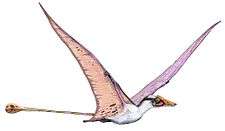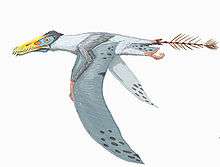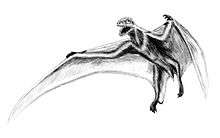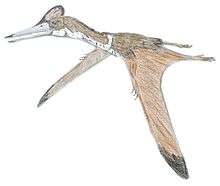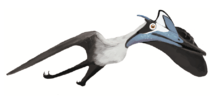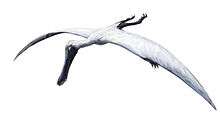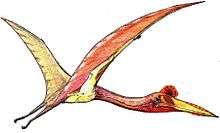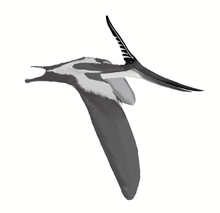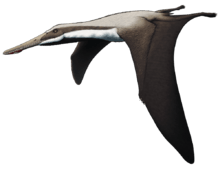Kepodactylus
Kepodactylus is an extinct genus of pterodactyloid pterosaur from the Kimmeridgian-Tithonian-age Upper Jurassic Morrison Formation of Colorado, United States.
| Kepodactylus Temporal range: Late Jurassic | |
|---|---|
| Scientific classification | |
| Kingdom: | Animalia |
| Phylum: | Chordata |
| Order: | †Pterosauria |
| Suborder: | †Pterodactyloidea |
| Family: | †Ctenochasmatidae |
| Genus: | †Kepodactylus Harris & Carpenter, 1996 |
| Species: | †K. insperatus |
| Binomial name | |
| †Kepodactylus insperatus Harris & Carpenter, 1996 | |
In 1992, a team from the Denver Museum of Natural History dug up a specimen of the dinosaur Stegosaurus stenops in Garden Park, Colorado. In the quarry they also found smaller disarticulated bones from other animals, among which were those of a pterosaur new to science.
In 1996, Jerald Harris and Kenneth Carpenter named the new genus. The type species is Kepodactylus insperatus. The genus name is derived from Greek, kepos, "garden", a reference to Garden Park and daktylos, "finger", referring to the typical wing finger of pterosaurs. The specific name means "unhoped-for" in Latin, alluding to the fact that the researchers hoped to find a dinosaur, and did not expect a pterosaur.
The genus is based on the holotype DMNH 21684, consisting of a cervical vertebra, humerus, several finger bones, and a metatarsal. Kepodactylus was similar to Mesadactylus but larger (wingspan around 2.5 m [8.2 ft]), and with additional pneumatic foramina (holes to allow air from air sacks to enter the bones) in the vertebrae and humerus. The describers concluded that the species was a member of the Pterodactyloidea and within this group, using the phylogeny of David Unwin, a member of a clade that is now known as Lophocratia.[1] It was regarded as a potentially valid genus in the most recent review of Morrison pterosaurs.[2]
Classification
Cladogram following the latest version of Andres' data set, published by Longrich, Martill, and Andres in 2018:[3]
| Ctenochasmatoidea |
| ||||||||||||||||||||||||||||||||||||||||||||||||||||||||||||
References
- Harris, J.D., and Carpenter, K. (1996). A large pterodactyloid from the Morrison Formation (Late Jurassic) of Garden Park, Colorado. Neues Jahrbuch für Geologie und Paläontologie Monatshefte 1996(8):473-484.
- King, L.R., Foster, J.R., and Scheetz, R.D. (2006). New pterosaur specimens from the Morrison Formation and a summary of the Late Jurassic pterosaur record of the Rocky Mountain region. In: Foster, J.R., and Lucas, S.G. (eds.). Paleontology and Geology of the Upper Morrison Formation. New Mexico Museum of Natural History and Science Bulletin 36:149-161. ISSN 1524-4156.
- Longrich, N.R.; Martill, D.M.; Andres, B. (2018). "Late Maastrichtian pterosaurs from North Africa and mass extinction of Pterosauria at the Cretaceous-Paleogene boundary". PLoS Biology. 16 (3): e2001663. doi:10.1371/journal.pbio.2001663. PMC 5849296. PMID 29534059.
